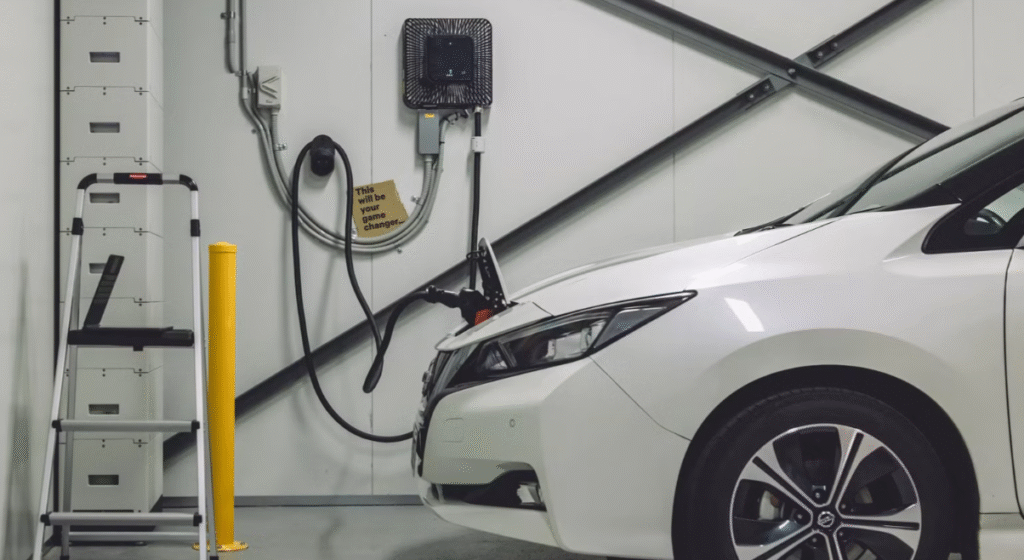The Future is Electric: How New Vehicle Technology is Revolutionizing Australia

It’s impossible to ignore the quiet revolution happening on Australian roads. The gentle hum of electric motors is steadily replacing the roar of internal combustion engines, signaling a seismic shift in our transport landscape. Electric vehicles (EVs) are no longer a novelty; they are at the forefront of a technological wave that is reshaping how we drive, how we think about energy, and how we envision a more sustainable future.
While Australia has been a late bloomer in the global EV race, the pace of change is now undeniable. We’ve surpassed 100,000 EVs on our roads, and with a staggering 150% increase in uptake in just two years, we’re on a steep upward trajectory. This isn’t just a trend; it’s a fundamental transformation.
The State of EVs in Australia: A Snapshot
According to the Electric Vehicle Council, Australia is on track for 110,000 EV sales in the 2024 financial year, capturing a significant 9.5% of the new car market. This rapid growth is being fueled by a number of factors, including increasing consumer awareness, a wider range of available models, and a growing network of public charging stations, which have doubled to over 1,000 fast-charging sites nationwide in just a year.
However, the road ahead is not without its challenges. The Electric Vehicle Council has noted that reaching a 50% EV market share by 2030 may be a stretch, particularly with the premature withdrawal of some state government incentives. Despite these hurdles, the momentum is undeniable.
Understanding the Technology Driving the Change
At the heart of this revolution is a suite of innovative technologies that are making EVs a more viable and attractive option for Australian drivers.
- Battery Electric Vehicles (BEVs): These are the most common type of EV and run entirely on electricity stored in a battery pack. They produce zero tailpipe emissions and are charged by plugging into the electricity grid.
- Plug-in Hybrid Electric Vehicles (PHEVs): PHEVs offer a stepping stone for those not yet ready to go fully electric. They combine a battery-powered electric motor with a traditional internal combustion engine, offering the flexibility of both.
- Fuel Cell Electric Vehicles (FCEVs): While less common, FCEVs represent another frontier in zero-emission transport. They generate electricity from a chemical reaction between hydrogen and oxygen, with water as the only byproduct.
The technology behind these vehicles is constantly evolving. Lithium-ion batteries, favored for their high power-to-weight ratio and energy efficiency, are becoming more affordable and offering longer ranges. Regenerative braking, a clever system that captures energy typically lost during braking and uses it to recharge the battery, further enhances efficiency.
The Next Frontier: Your Car as a Power Plant (V2G Technology)
Beyond simply being a mode of transport, the next evolution in EV technology is set to transform our relationship with the energy grid itself. This is the realm of Vehicle-to-Grid (V2G) technology, a concept that turns your EV into a “battery on wheels.”
So, what exactly is V2G? At its core, it’s the ability for an EV to not only draw power from the grid but also to send it back. This is made possible through a special type of charger called a bidirectional charger. While often used as a catch-all term, there are a few key variations:
- Vehicle-to-Grid (V2G): This is the big one. With V2G, your EV can feed excess energy from its battery back into the electricity grid. This can help stabilize the grid during times of high demand, support the integration of renewable energy sources, and even earn you money from your electricity retailer.
- Vehicle-to-Home (V2H): Similar to V2G, but instead of sending power to the grid, your EV powers your home directly. This can be a game-changer during a blackout, providing a reliable source of backup power.
- Vehicle-to-Load (V2L): The simplest form of this technology, V2L allows you to plug appliances directly into your car, turning it into a mobile power source for camping, worksites, or any other off-grid activity.
The potential benefits of V2G for Australia are immense. In a country with a high uptake of rooftop solar, V2G offers a way to store that excess solar energy during the day and use it to power your home or sell it back to the grid during the evening peak. This can help to reduce our reliance on fossil fuels, lower electricity bills for everyone, and create a more resilient and flexible energy system.
Australia is already seeing a number of V2G trials underway, from the REVS project in the ACT to initiatives by Endeavour Energy, Ausgrid, and a recent trial in Exmouth, Western Australia. A major step forward has been the recent approval of a new standard for bidirectional chargers (AS/NZS 4777.2), which will pave the way for wider adoption of this technology. While challenges remain, including the high cost of bidirectional chargers and the limited number of V2G-compatible vehicles, the future of V2G in Australia looks bright.
The Benefits of Going Electric
The appeal of EVs extends far beyond their environmental credentials. For Australian drivers, the benefits are both practical and financial.
- Reduced Running Costs: With the ever-present sting of high petrol prices, the ability to “refuel” at home with electricity is a major drawcard. The Australian Taxation Office even provides a shortcut method for calculating electricity costs for FBT purposes, making it easier for businesses to embrace EVs.
- Lower Maintenance: With fewer moving parts than a traditional engine, EVs require less maintenance. Say goodbye to oil changes, spark plugs, and fuel filters.
- A Better Driving Experience: The instant torque from an electric motor provides a thrilling and responsive driving experience. The low center of gravity, due to the placement of the battery pack, also results in improved handling and stability.
- A Cleaner, Quieter Australia: The most obvious benefit is the elimination of tailpipe emissions, leading to cleaner air in our cities and towns. The reduction in traffic noise also contributes to a more pleasant urban environment.
The Road Ahead: Overcoming the Hurdles
Despite the clear benefits, there are still challenges to overcome. The initial purchase price of EVs remains a barrier for many, although this is expected to decrease as manufacturing scales up and battery technology improves. “Range anxiety,” the fear of running out of charge, is another common concern, but with the average Australian driving around 33km a day and the range of many new EVs exceeding 400km, this is becoming less of an issue. The continued expansion of public charging infrastructure will be crucial in addressing this concern.
Government policy will also play a critical role. While some incentives have been wound back, the Australian Government’s Electric Car Discount, which exempts eligible EVs from Fringe Benefits Tax and import tariffs, is a significant step in the right direction.
A Glimpse into the Future
The future of electric vehicles in Australia is bright. We can expect to see an even wider range of models become available, from compact city cars to rugged SUVs and utes. Advancements in battery technology will continue to drive down costs and increase range, making EVs an even more compelling proposition for the average Australian.
The transition to an electric fleet is not just about changing the cars we drive; it’s about building a more sustainable and prosperous future for Australia. It’s a journey we are all on together, and one that promises a cleaner, quieter, and more exciting road ahead.
References:
- Electric Vehicle Council: https://electricvehiclecouncil.com.au/
- iMOVE Australia: https://imoveaustralia.com/topics/electric-vehicles/
- Kia Australia: https://www.kia.com/au/cars/electric-cars.html
- Green Vehicle Guide: https://www.greenvehicleguide.gov.au/pages/LowAndZeroEmissionVehicles/ElectricVehicleInformation
- Australian Taxation Office: https://www.ato.gov.au/businesses-and-organisations/hiring-and-paying-your-workers/fringe-benefits-tax/types-of-fringe-benefits/fbt-on-cars-other-vehicles-parking-and-tolls/electric-cars-exemption
- Volkswagen Australia: https://www.volkswagen.com.au/en/range/ev.html
- Tesla Australia: https://www.tesla.com/en_au
- Training.gov.au: https://training.gov.au/training/details/AUR32721
- Nova Anglia College: https://www.nac.edu.au/bachelor-of-technology-electric-vehicle/
- Essential Energy – Vehicle-to-Grid: https://www.essentialenergy.com.au/our-network/electric-vehicles/vehicle-to-grid
- JET Charge – V2G Australia: https://jetcharge.com.au/solutions/vehicle-to-grid/
- Ausgrid – V2G: https://www.ausgrid.com.au/About-Us/Future-Grid/Electric-Vehicles/V2G
- SolarChoice – Bidirectional EV Chargers Explained: https://www.solarchoice.net.au/ev/charging/bidirectional-v2g-v2h-v2l
- ActewAGL – Vehicle-to-grid technology: https://www.actewagl.com.au/news-and-info/information/vehicle-to-grid-technology
- V2grid Australia: https://v2grid.com.au/
- CSIRO – New study brings vehicle-to-grid technology a step closer in Australia: https://www.csiro.au/en/news/All/Articles/2025/April/vehicle-to-grid-V2G
- Government of Western Australia – Exmouth trial to test two-way Electric Vehicle charging potential: https://www.wa.gov.au/government/media-statements/Cook-Labor-Government/Exmouth-trial-to-test-two-way-Electric-Vehicle-charging-potential-20240423
